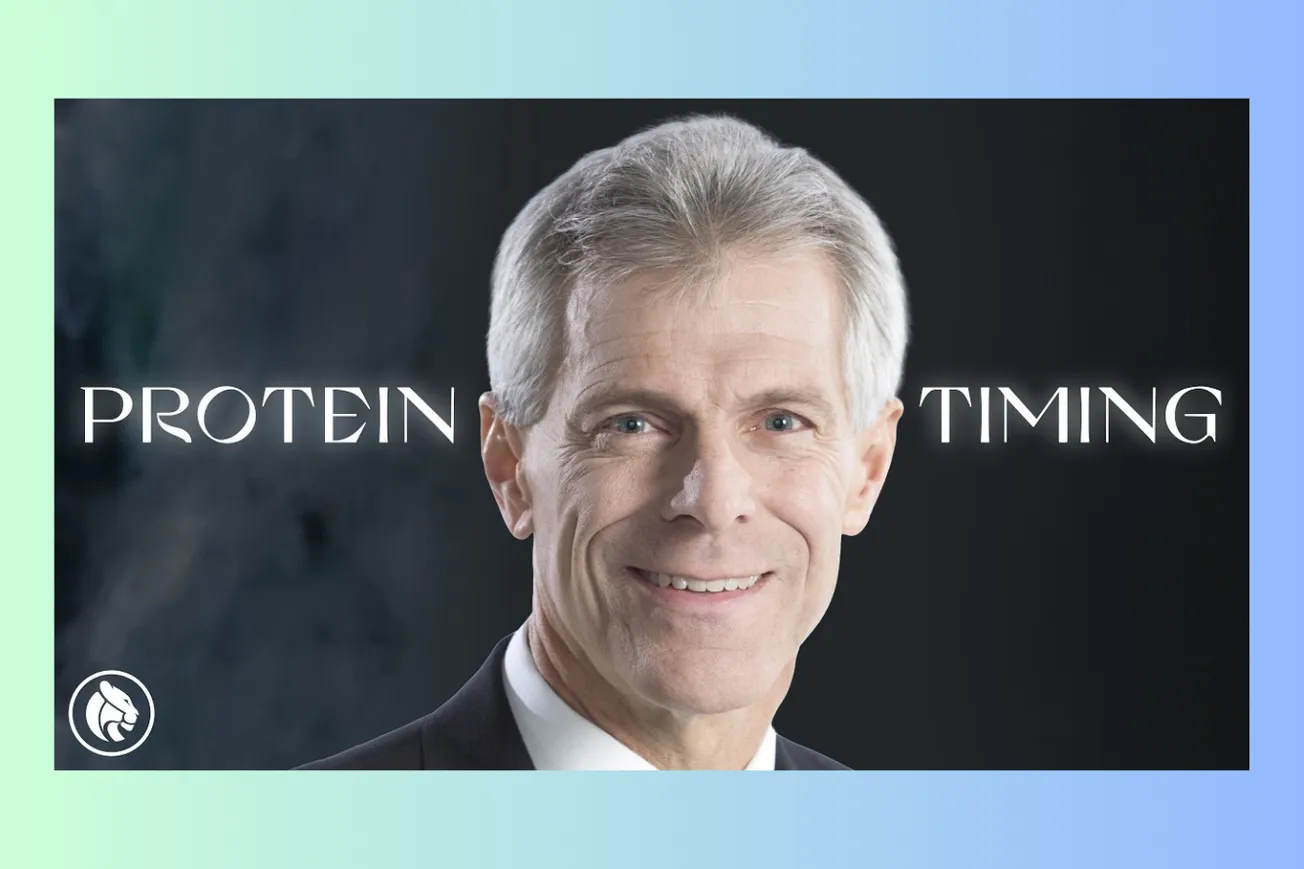Table of Contents
Discover the science behind vision, eye health, and practical, zero-cost tools you can use to maintain and even improve your eyesight throughout your life, based on insights from the Huberman Lab Podcast. Learn how light exposure, specific exercises, and lifestyle habits impact your visual system and overall well-being.
Timeline Overview
- 00:00 - 15:00 — Introduction to the podcast's mission, sponsor messages (Roka, Inside Tracker, Helix Sleep), brief recap on concurrent training (strength/hypertrophy vs. endurance), and introduction to the new series on the senses, starting with vision. Emphasis on the eye as part of the brain and the importance of vision for everyone, including young people. Discussion on how light enters the eye and initial processing via the lens and retina. Introduction to photoreceptors (rods and cones) and retinal ganglion cells.
- 15:00 - 30:00 — Deeper dive into how vision works: light conversion to electricity, the brain's interpretation and comparison of signals (e.g., color perception as relative, not absolute), comparison with animal vision (dogs lacking red cones, pit vipers seeing heat, ground squirrels using UV). Explanation of the blind spot and how the brain fills it in. Discussion of depth perception cues (size, speed, motion parallax, binocular disparity). Emphasis on the brain dedicating ~40-50% of its real estate to vision. Introduction to the subconscious aspects of vision: setting circadian rhythms via melanopsin retinal ganglion cells.
- 30:00 - 45:00 — Focus on melanopsin cells: their role in communicating time of day, regulating sleep, mood, metabolism, dopamine, pain threshold. Protocol 1: Importance of viewing sunlight (low solar angle) for 2-10 minutes morning and evening to activate these cells and anchor circadian rhythms. Protocol 2: Benefits of getting 2 hours of outdoor time daily (without sunglasses) to prevent myopia (nearsightedness), likely by activating melanopsin cells which support eye muscle health and focus mechanisms. Discussion of a study showing outdoor time significantly reduces myopia risk in children.
- 45:00 - 1:00:00 — Explanation of accommodation: how the eye lens changes shape via ciliary muscles to focus on near vs. far objects. Looking far relaxes the lens; looking close requires muscular effort. Protocol 3: Importance of relaxing the eyes by looking at distant objects/horizon regularly (panoramic vision) to prevent eye strain and maintain lens elasticity, especially with prolonged close work (screens, phones). Suggestion: look far away every 30 mins briefly, and take a ~20-30 min break for distance viewing every 90 mins of close work. Discussion of the link between eye/eyelid position and alertness (eyes up = more alert, eyes down = less alert). Protocol 4: Positioning screens at/above eye level and periodically looking up to boost alertness.
- 1:00:00 - 1:15:00 — Impact of nighttime light exposure: Study showing nightlights increase myopia risk in children, likely due to light penetrating eyelids and disrupting melanopsin cells/accommodation mechanisms. Protocol 5: Sleep in a dark environment; avoid bright light (especially blue light) between 10 PM - 4 AM to protect dopamine, mood, learning, and prevent negative metabolic effects via the habenula. Introduction to pattern vision, colorblindness (red-green issues, using magenta), and the importance of viewing distant horizons (≥10 mins/day total). Introduction to smooth pursuit eye movements.
- 1:15:00 - 1:30:00 — Protocol 6: Practicing smooth pursuit (tracking moving objects) for 5-10 mins, 3x/week to maintain eye muscle coordination and visual tracking systems (using online stimuli or real-world objects). Protocol 7: Practicing accommodation (near-far focus shifts) for 2-5 mins every few days. Discussion on amblyopia (lazy eye) and critical periods in visual development; importance of correcting eye imbalances early. Mention of Hubel & Wiesel's Nobel Prize work on critical periods and ocular dominance plasticity. Explanation that covering both eyes extends plasticity, while covering one degrades vision in that eye due to competition. Importance of getting vision professionally tested (ophthalmologist/good optometrist) rather than relying on potentially inaccurate store tests.
- 1:30:00 - 1:45:00 — Discussion on hallucinations arising from under-activation of the visual cortex (sensory deprivation), citing Cris Niell's research. Using a Snellen chart at home to monitor and practice visual acuity. Reiterating the importance of vision for quality of life. Mention of red light therapy (Glen Jeffery's research) potentially offsetting age-related macular degeneration (AMD) by boosting mitochondrial function in photoreceptors, specifically for those ≥40 yrs, early in the day, with caution advised. Discussion of eye lubrication, blinking exercises for dry eye. Recap of the necessity of Vitamin A (carrots, leafy greens) for the phototransduction cascade. Introduction to lutein supplementation.
- 1:45:00 - 1:49:33 — Further details on lutein: study showing benefits (increased macular pigment, visual acuity) for moderate-to-severe AMD, but not mild AMD or normal vision. Mention of other potentially beneficial supplements (idebenone for Leber's optic neuropathy, zeaxanthin, astaxanthin). Astaxanthin details: red-pink pigment (seafood, flamingo feathers), increases ocular blood flow, potential benefits for male fertility and skin quality. Importance of cardiovascular health (exercise) for delivering blood/nutrients to the eyes. Concluding remarks, podcast support requests (subscribe, review, sponsors, Patreon, Thorne supplements), and thank you.
Key Takeaways
- Your eyes are part of your brain and crucial not only for seeing shapes and colors but also for regulating mood, alertness, sleep, and metabolism via subconscious light detection.
- Viewing sunlight (even through clouds) for 2-10 minutes shortly after waking and again in the late afternoon is vital for setting your body's internal clock and supporting overall health.
- Spending around two hours outdoors daily, without sunglasses, significantly reduces the risk of developing nearsightedness (myopia) by stimulating specific eye cells and mechanisms.
- Regularly practice looking at distant objects (panoramic vision) to relax eye muscles and counterbalance the strain of prolonged close-up work on screens or phones.
- Avoid bright light exposure, especially from screens, between 10 PM and 4 AM to protect sleep quality, dopamine levels, mood, and metabolic health.
- Sleeping in a very dark room can reduce the risk of myopia, particularly in children, as light can penetrate even closed eyelids.
- Actively exercising your eyes with smooth pursuit (tracking moving objects) and accommodation (near-far focus shifts) for a few minutes, several times a week, can help maintain visual function.
- Nutrients like Vitamin A (from diet) are essential for vision; supplements like Lutein may benefit those with moderate-to-severe age-related macular degeneration (AMD).
- Maintaining good cardiovascular health through exercise supports the high metabolic needs of your eyes by ensuring adequate blood flow.
The Dual Nature of Vision: Sight and Biological Rhythms
- Vision encompasses more than just consciously perceiving shapes, colors, and movement (eyesight); it fundamentally involves subconscious light detection that governs critical biological processes. Your eyes contain the only part of your brain located outside the skull – the neural retinas.
- Light enters the eye, is focused by the lens onto the retina, where specialized cells called photoreceptors (rods for low light, cones for bright light/color) convert light energy into electrical signals using biochemical reactions involving Vitamin A.
- These electrical signals are processed through layers of retinal neurons and ultimately sent to the rest of the brain via retinal ganglion cells. Your perception of the world (e.g., color, shape) is the brain's interpretation or best guess based on comparing these electrical patterns, not a direct view of objects themselves.
- For example, color perception arises from comparing the activity of different cone types (typically sensitive to blue, green, and red wavelengths). Dogs lack red cones, so their perception of colors like green and red differs significantly from humans with trichromatic vision.
- Beyond conscious sight, a special class of retinal ganglion cells containing melanopsin acts as light detectors, primarily responding to blue-yellow light contrast typical of dawn and dusk. These cells are ancient and their primary role is to inform the entire body about the time of day.
- These melanopsin cells directly influence your master circadian clock, regulating sleep-wake cycles, hormone release (like cortisol and melatonin), metabolism, dopamine levels, mood, alertness, and even pain thresholds. They function even in many people with low or no vision, as long as the retinas are present.
Harnessing Light for Eye Health and Well-being
- Morning Sunlight Protocol: Intentionally view sunlight for 2-10 minutes within the first hour or so after waking, when the sun is low in the sky. Do this without sunglasses, and don't look directly at the sun. Even on cloudy days, sufficient light gets through. This strongly activates melanopsin cells, anchoring your circadian rhythm, boosting alertness, mood, and metabolism. Andrew Huberman states: "If you are not viewing the sun, sunlight, even through cloud cover, for two to 10 minutes in the early part of the day... you are severely disrupting your sleep rhythms, your mood, your hormones, your metabolism...".
- Evening Sunlight Protocol: Repeat the sunlight viewing for 2-10 minutes in the late afternoon/early evening as the sun is setting to provide a secondary cue for the circadian clock.
- Daytime Outdoor Exposure for Myopia Prevention: Aim for an average of two hours of outdoor time per day, without sunglasses if safe. Large studies show this significantly reduces the likelihood of developing myopia (nearsightedness), especially in children and young adults. This benefit is linked to sunlight exposure activating melanopsin cells which support the eye's internal focusing mechanisms and potentially growth factor release. Artificial light indoors does not substitute for this effect.
- Window Light Limitation: Getting light through windows (home, office, car windshields) is significantly less effective, filtering out up to 50 times the beneficial wavelengths. Open windows or go outside whenever possible.
- Nighttime Light Avoidance: Crucially, avoid exposure to bright light, particularly blue light from screens or overhead lights, between approximately 10 PM and 4 AM. Such exposure severely disrupts melatonin production, suppresses dopamine, negatively impacts mood and learning, and can impair metabolic health.
- Sleep Environment: Ensure your sleeping environment is as dark as possible. Studies link sleeping with nightlights or ambient light to an increased risk of myopia in children, likely because light penetrates the eyelids and interferes with eye development and function during sleep.
Training Your Eyes: Focus, Flexibility, and Function
- Understanding Accommodation: Your eye's lens dynamically changes shape to focus light correctly onto the retina for objects at different distances. This process, called accommodation, involves tiny muscles (ciliary body) contracting to make the lens thicker for near objects (requiring effort) and relaxing to flatten the lens for distant objects.
- Combatting Close-Work Strain: Prolonged focus on near objects (screens, books) keeps accommodation muscles contracted, leading to eye strain, fatigue, headaches, and potentially contributing to myopia by making the eye less flexible.
- Panoramic Vision Practice (Relaxation): Regularly look at distant objects (ideally a horizon miles away, but at least >20 feet) to allow the lens and eye muscles to relax fully. Aim for at least 10 minutes total per day, and incorporate short "gaze breaks" every 30 minutes during close work. Letting your gaze go soft ("panoramic vision") where you aren't focused on anything specific is also beneficial. This distant viewing is physiologically relaxing, reducing alertness/stress signals.
- Accommodation Exercise (Near-Far): Actively exercise the focusing mechanism for 2-5 minutes every few days. Hold an object (like a pen), focus on it up close until just before it blurs or requires crossing your eyes, hold for 10-20 seconds, then slowly move it out to arm's length, refocusing, hold again, and repeat. This maintains the lens's elasticity and muscle strength.
- Smooth Pursuit Exercise (Tracking): Practice tracking a smoothly moving object with your eyes for 5-10 minutes, perhaps 3 times per week. This maintains the health and coordination of the extraocular muscles (moving the eyeball) and the brain circuits responsible for tracking. You can use online smooth pursuit stimuli (videos often showing a dot moving) or track real-world objects.
- Blinking for Lubrication: Conscious blinking for 15 seconds (about one blink every second or two) can help lubricate the eye surface, improving optical clarity, especially if you experience dry eyes during focused work.
Supporting Vision Through Nutrition and Supplements
- Vitamin A: Essential for the biochemical cascade (phototransduction) that converts light into neural signals. Found abundantly in carrots and dark leafy green vegetables. Consuming these foods supports baseline visual function. Deficiency leads to impaired vision, but super-physiological doses don't necessarily grant "super vision".
- Lutein: A carotenoid related to Vitamin A. Studies, including randomized controlled trials, show that lutein supplementation can increase macular pigment density and visual acuity, potentially offsetting vision loss, specifically in individuals with moderate to severe age-related macular degeneration (AMD). It does not appear significantly beneficial for those with normal vision or mild AMD based on current evidence. Raw egg yolks are a dense source, but supplements are available.
- Zeaxanthin and Astaxanthin: Often included with lutein in eye health supplements. Astaxanthin, a red-pink pigment found in seafood and flamingo feathers, has antioxidant properties and has been shown in some studies to increase ocular blood flow. It may also improve skin quality and, intriguingly, male fertility in specific cases. More research is needed on their general preventative effects for eye health.
- Idebenone: May offer benefits for specific rare conditions like Leber's hereditary optic neuropathy, but its general use is not well-established.
- Cardiovascular Health: Maintaining good heart health through regular exercise (endurance and strength training) is crucial for vision. The eyes' high metabolic activity demands robust blood flow to deliver oxygen and nutrients; poor circulation can compromise eye health.
Advanced Topics and Considerations
- Red Light Therapy: Preliminary research by Glen Jeffery suggests that brief exposure (e.g., 2 minutes) to specific wavelengths of flashing red light early in the day might help improve mitochondrial function in photoreceptors and offset some effects of AMD in people over 40. Caution is advised: never use light bright enough to cause pain, and consult an ophthalmologist.
- Amblyopia (Lazy Eye) & Critical Periods: The brain heavily relies on balanced input from both eyes, especially during childhood (critical period up to ~age 7-12). Covering one eye (monocular occlusion) even briefly during this period can cause the brain to effectively 'ignore' input from that eye, leading to amblyopia. Treatment involves patching the stronger eye to force the weaker eye to work. Early correction of eye misalignment (strabismus) is important for developing good binocular vision.
- Binocular Vision & Depth: Our two slightly offset eyes provide different views, which the brain compares (binocular disparity) to create a sense of depth. If binocular vision is weak, the brain relies more on monocular cues like motion parallax (closer objects appear to move faster) and relative size.
- Hallucinations: Contrary to common belief, visual hallucinations (seeing things that aren't there) can arise from under-activation or sensory deprivation of the visual cortex, causing the system to generate its own activity. This can happen in prolonged darkness or with certain substances.
- Professional Eye Exams: Get regular, comprehensive eye exams from a qualified ophthalmologist or a highly skilled optometrist. Automated tests in stores can be inaccurate, leading to incorrect prescriptions that might even hinder eye health.
Bottom Line
Maintaining optimal eye health and vision requires a proactive approach integrating lifestyle habits and targeted exercises. Prioritizing daily sunlight exposure, balancing close work with distance viewing, and potentially incorporating specific eye exercises form the foundation for lifelong visual well-being.









